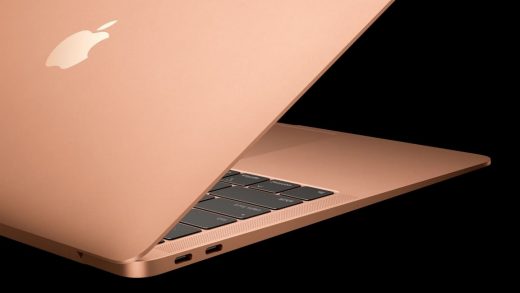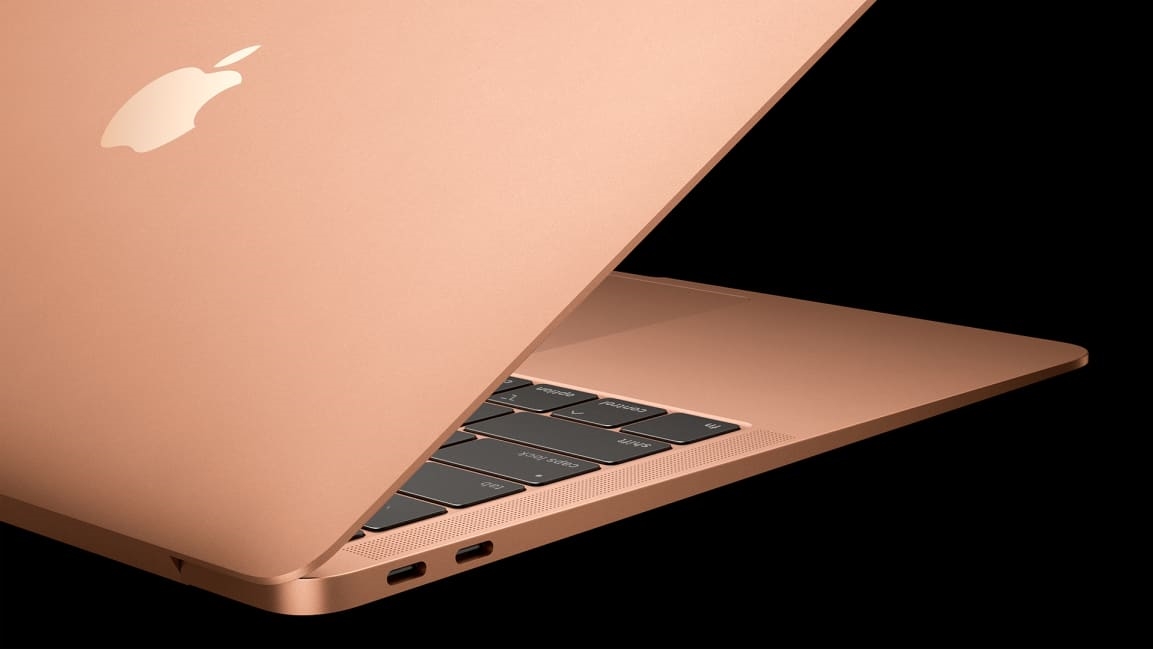Apple answers MacBook Air fans’ gripes and hopes, for a price
Apple announced a long-awaited redesign of its popular–but aging–MacBook Air today at a press event in Brooklyn. The new Air is likely to satisfy most of the anxieties of those who were worried that the company would fail to address the product’s major shortcomings.
The MacBook Air is a bit of an antique. The original version was released way back in 2008, and a major update arrived in 2010. It’s felt a little like a dead laptop walking since at least 2015, when Apple introduced a new thin-and-light MacBook with a high-resolution Retina screen. Apple has given the 2010-vintage Air regular spec bumps over the years, but never added a Retina display. Some thought the company would just fold the Air into the non-Pro MacBook model and be done with it.
Despite everything, people still love their Airs. “IT departments and budget conscious purchasers have been buying the MacBook Air for many years despite the technology being out of date,” said Bradley Chambers in a recent piece for 9to5Mac. Chambers is a Chattanooga-based IT manager who buys and manages computers for a private school. “Let’s hope they announce something on 10/30; I hope it’s a funeral for the MacBook Air.”
Nope. The Air has a new lease on life. And with the upgrade Apple did squarely address the old version’s main problems.
The old Air’s display was a 13.3-inch relic with 1,440-by-900 screen resolution. The new Air has a new Retina display at 2560 by 1600 pixels. The old Air had a wide aluminum bezel around its screen; the new one dispenses with that and extends the display outward toward the edge of the body. The new Air’s display is still 13.3 inches, and the case retains its trademark wedge shape, but the body is smaller–17% smaller by volume–and it weighs 2.75 pounds, a quarter pound lighter than the previous Air.
The old Air had a slower fifth-generation Intel Core i5 processor, but the new Air’s upgrade to an 8th-generation Intel Core i5 processor should make browsing the web, playing video, opening apps, or managing photos quite a bit zippier.
The new model also has a newly designed keyboard (with a Touch ID button but no Touch Bar), a much larger trackpad, improved stereo sound, and Apple’s dedicated T2 security chip.
The old Air had a couple of old USB-A ports, a slot for removable storage, and a MagSafe 2 connector for power. The new model has two USB-C ports, which can be used for power or peripherals.
The dongle conundrum
Much of the world’s tech still uses USB-A, and some Air fans will complain about the new Air’s USB-C ports. “As a photographer I’m really hoping to keep the SD slot, hell even keep a USB-A or two,” one 9to5Mac commenter said. “It would be Apple’s entry level laptop so it could keep some ‘legacy’ ports.”
It’s true that new Air owners will need to buy a dongle or USB-C cable even to perform a simple tasks such as plugging in an iPhone for charging or syncing. But at least the new Air has two USB-C ports. The non-Pro MacBook only has one USB-C port, so you can’t power the machine and use a peripheral at the same time without buying an adapter.
That 2015 MacBook was Apple’s first USB-C device, so fretting over the need for adapters and new cables is getting to be an old complaint. “I doubt anybody expected something different on ports … as there should be consistency,” says Creative Strategies analyst Carolina Milanesi. “Given USB-C was added to the [new iPad Pro], I do not see how they could have done otherwise.”
“Given the upgrades, I think people will be pretty happy,” she adds.
Still, today’s announcement does leave some lingering questions about the Air’s identity and its real role in Apple’s product portfolio. When the original Air debuted almost 11 years ago, its defining feature was how little of it there was–remember Steve Jobs whisking it out of a manila envelope during Apple’s launch event at Macworld Expo? “At one point, I thought [the MacBook Air brand promise] spoke more to the form factor being so thin and light,” said IDC analyst Linn Huang in an email. “Yet, at $100 more for the base models, the MacBook is both thinner and lighter.”
The Air’s modus operandi may have shifted over the years. Compared to the MacBook Pro, Huang says, it’s less about the sort of high-end components that power users crave. He points out that there are many people who like the Apple brand or ecosystem, have iPhones or iPads, and just want a MacBook at an accessible price. “I think over the years, that is what the Air brand has started to stand for–the most accessible MacBook for the swaths of iPhone and iPad owners.”
The new 128 GB MacBook Air sells for $1,199–$200 more than the previous Air model–while the 256 GB model sells for $1,399. That’s not an unprecedented price for a MacBook Air: When the previous 13? model was introduced in 2010, it started at $1,299. But Apple still wants to cater to people who want a mobile Mac but aren’t about to pay $1,199. Its machine for those folks? The old-school Air, which remains on the market at $999.
9to5Mac’s Chambers, the guy who’d called for the MacBook Air’s demise, thinks that many businesses will still buy the aging $999 model for as long as it’s available. But he’s impressed by the new Air. “The new laptop is exactly what I’d hope Apple would build,” he says. “The addition of the Retina screen makes it the go-to laptop in the Apple lineup. My only complaint is that the default storage option is still 128 GB.”
(21)



